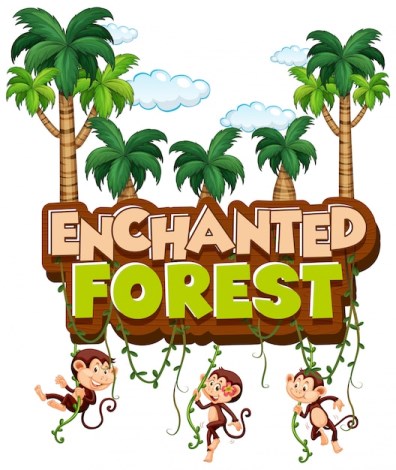Interesting Facts About Madagascar

Did you know that Madagascar is the fourth largest island in the world?
Madagascar is known for its incredible biodiversity, with over 90% of its wildlife found nowhere else on Earth.
The famous lemurs are native to Madagascar and can only be found in the wild on the island.
Madagascar is home to the world’s smallest chameleon, which can fit comfortably on the head of a matchstick.
The island is also known for its unique baobab trees, some of which are over 1,000 years old.
If you travel to Madagascar, you can visit Avenue of the Baobabs, a famous road lined with these majestic trees.
Did you know that the Madagascar hissing cockroach is the largest cockroach species in the world and is often kept as a pet?
Despite its large size, the hissing cockroach does not have wings and is unable to fly.
Madagascar is a paradise for birdwatchers, as it is home to over 300 avian species, including the vibrant kingfisher.
The island boasts stunning landscapes, including lush rainforests, golden beaches, and towering limestone formations.
Local people in Madagascar often practice traditional healing methods using native plants and herbs.
Madagascar has a rich cultural heritage, with various ethnic groups contributing to the country’s vibrant traditions and customs.
The Malagasy people are known for their intricate weaving and crafting skills, producing beautiful textiles and basketry.
The capital city of Madagascar, Antananarivo, offers a blend of modernity and historic charm with its colonial architecture and bustling markets.
Interesting Facts About Madagascar part 2
Madagascar has preserved its traditional music and dance forms, which reflect the diverse cultural influences found on the island.
The country’s cuisine features a variety of flavors, with staples like rice, meat, and vegetables forming the basis of many dishes.
Traditional Malagasy cuisine often incorporates exotic spices and flavors, reflecting the island’s unique biodiversity.
The coastline of Madagascar stretches for 5,000 kilometers, offering opportunities for snorkeling, diving, and relaxing on pristine beaches.
The island’s coral reefs are home to a stunning array of marine life, including colorful fish, turtles, and dolphins.
With its warm tropical climate, Madagascar is an excellent destination for adventure and outdoor activities, such as hiking and wildlife spotting.
Madagascar is famous for its rich vanilla production, with the island being one of the world’s top vanilla exporters.
The Malagasy people have developed various traditional agricultural practices, such as slash-and-burn farming and terraced rice paddies.
Madagascar is home to a vast network of national parks and reserves, protecting the country’s unique flora and fauna.
The iconic lemur known as the aye-aye has a long middle finger, which it uses to tap on trees and find insects hiding inside.
The aye-aye is considered sacred by some Malagasy tribes and is believed to bring good luck.
Despite its beauty, Madagascar faces environmental challenges, including deforestation, habitat loss, and poaching.
Conservation organizations like WWF and Madagascar National Parks are working to protect the island’s natural treasures.
Madagascar has unique geological formations, such as the Tsingy de Bemaraha, a dramatic limestone plateau with sharp, jagged pinnacles.
The island is also home to stunning waterfalls, including the Andasibe-Mantadia National Park’s iconic Cascade Rianbavy.
Madagascar’s diverse landscapes have been featured in several films, including the animated movie Madagascar.
The country’s national flag features red, white, and green stripes, symbolizing courage, purity, and hope.
Madagascar has 18 different ethnic groups, each with its own distinct traditions, language, and customs.
The Malagasy language is the national language of Madagascar, with French also widely spoken.
Zebu cattle are an important part of the Malagasy culture and economy, with many festivals and rituals dedicated to them.
The Tsingy de Bemaraha Strict Nature Reserve is a UNESCO World Heritage site, known for its unique biodiversity and stunning landscape.
Madagascar is a popular destination for snorkelers and divers, with its crystal-clear waters teeming with colorful fish and coral reefs.
The country is also famous for its fine silk production, with weavers creating intricate patterns and designs.
Many Malagasy people practice Vodou, a syncretic religion combining elements of indigenous beliefs and Christianity.
The Madagascan sunny name for a hello is Manao ny tsara meaning How are you?
Betioky is the driest place in Madagascar with average rainfall is just 0.07 inches
Over 80% of Madagascar’s plant and animal species are found nowhere else on Earth.
It is estimated that 80-90 percent of Madagascar’s fauna and flora is yet to be properly cataloged by scientists.
The national parks of Madagascar are among the top tourist attractions and cover an area greater than 6 million acres.
Ankarafantsika National Park is a biodiversity hot spot, where you culd find over 129 species of birds.
Ranomafana National Park is home to the golden bamboo lemur, a species that was only discovered in the 1980s.

